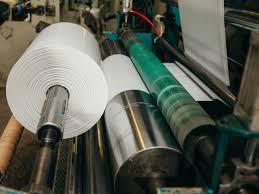Unraveling the Rich Tapestry of Calandrando
Calandrando, a term resonating with heritage and craftsmanship, has woven its way through the annals of history, embodying the essence of meticulous artistry and cultural significance. Originating from the Italian word “calandra,” meaning “to iron,” calandrando refers to a traditional textile finishing process that adds a distinctive texture and sheen to fabrics, elevating them to a realm of unparalleled elegance. This article embarks on a journey to delve into the depths of calandrando, exploring its historical roots, techniques, contemporary relevance, and future prospects.
Tracing the Origins
The origins of calandrando can be traced back to ancient civilizations where fabrics were not only utilitarian but also bore symbolic and aesthetic value. Historically, civilizations such as Ancient Egypt and Mesopotamia showcased advanced textile techniques, including processes akin to calandrando, to enhance the appeal of their garments and linens. Over time, these techniques evolved and traveled across continents, eventually finding a niche in Italian textile traditions during the Renaissance era.
The Artistry Behind Calandrando
At its core, calandrando epitomizes the marriage of artistry and technical finesse. The process involves feeding fabric through heated rollers under pressure, which imparts a smooth, glossy finish to the material. However, the true mastery lies in the nuanced control of temperature, pressure, and speed, as well as the choice of fabric and roller materials. Skilled artisans meticulously orchestrate these variables to achieve desired textures ranging from soft and subtle to bold and pronounced, thereby imbuing each piece with a unique character.
Preserving Tradition in a Modern World
In an era dominated by mass production and mechanization, the preservation of traditional craftsmanship assumes paramount importance. Calandrando serves as a testament to the enduring legacy of artisanal techniques, standing in stark contrast to the uniformity of factory-made textiles. While modern machinery has streamlined certain aspects of the process, many artisans continue to uphold age-old techniques, ensuring that each piece retains its individuality and artisanal charm.
Revival and Reinvention
The resurgence of interest in heritage crafts and sustainable practices has sparked a renewed appreciation for calandrando in contemporary fashion and design circles. Designers and consumers alike are drawn to the tactile allure and timeless elegance of calandrando fabrics, viewing them as a statement of discerning taste and conscious consumption. Furthermore, the versatility of calandrando lends itself to a myriad of applications, from haute couture garments to luxury home furnishings, fostering innovation and experimentation within the realm of textile design.
Challenges and Opportunities
Despite its enduring appeal, calandrando faces certain challenges in an increasingly globalized market. The scarcity of skilled artisans, coupled with the rising costs of production, poses obstacles to its widespread adoption. Additionally, competition from synthetic alternatives and fast fashion trends presents a formidable challenge to traditional craft practices. However, these challenges also pave the way for opportunities to innovate and adapt, whether through collaborations with contemporary designers, integration of sustainable practices, or tapping into niche markets seeking authenticity and heritage.
Looking Ahead: The Future of Calandrando
As we chart a course into the future, the prospects for calandrando remain promising yet uncertain. While the allure of tradition continues to captivate discerning audiences, the industry must navigate evolving consumer preferences and technological advancements. Embracing innovation while staying true to its roots will be key to sustaining calandrando‘s relevance in a dynamic and ever-changing landscape. Ultimately, calandrando stands as a timeless testament to the enduring power of craftsmanship and the enduring beauty of tradition in an increasingly digital world.

